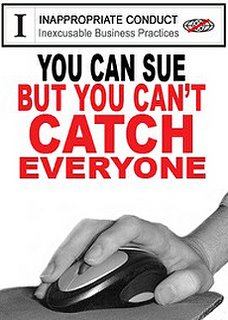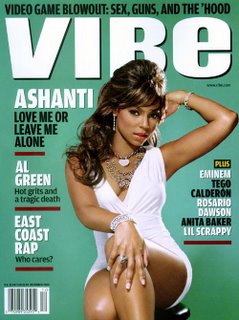
 The Flavor of Marketing to Kids
The Flavor of Marketing to KidsBy Joseph A. Califano Jr. and Louis W. Sullivan
Thursday, June 29, 2006; A27
Reynolds Tobacco (or RJR), the company that brought us Joe Camel, is up to its old tricks, targeting our children again.
Twenty years ago RJR created Joe Camel, who blew smoke rings over Times Square and was so heavily promoted that more children recognized this cartoon character than Walt Disney's Mickey Mouse. Only after years of complaints from public health advocates and parents, and the threat of legal action by the Federal Trade Commission, did RJR shut down its Joe Camel campaign.
All the while, RJR maintained that it did not market to children. But with the release of internal company documents years later, one of RJR's key papers, "Younger Smokers -- Ages 14-25," revealed the company's interest in marketing cigarettes to young smokers.
Now RJR is marketing the sweet smell and taste of flavored cigarettes that mask the harshness of natural tobacco, which can deter some first-time smokers, especially children. These cigarettes are packaged in shiny tins with cool new names, flashy advertising and candy flavors ranging from watermelon ("Beach Breezer") to berry ("Bayou Blast") to pineapple and coconut ("Kauai Kolada").
As Reynolds has known for decades, 90 percent of adult smokers become addicted as kids, and the younger a child begins to smoke, the likelier the child is to become a regular smoker. Moreover, the age at which kids first try cigarettes has been declining and now stands at just under 12. By masking the regular tobacco flavor and scent, flavored cigarettes make it even more appealing for a 12- or 13-year-old to take that initial puff and keep smoking until he or she gets hooked.
Reynolds introduced these cigarettes in 1999, slipping a pellet into the cigarette filters to give the smoke a candy flavor. But flavored cigarette sales really exploded in 2004, thanks to eye-catching advertisements in magazines such as Cosmopolitan, Sports Illustrated and Rolling Stone -- all popular reading material for boys and girls. In mid-2005, under pressure from states such as California and from federal legislators, Reynolds began pulling these advertisements. But the company continues to sell its candy-flavored smokes.
Reynolds's claim that it flavors cigarettes to give adults an alternative to traditional smokes is belied by the findings of the Roswell Park Cancer Institute in Buffalo. That research institute found that, compared with adult smokers over 25, more than three times as many teens who smoke light up flavored cigarettes.
Reynolds now sells five Camel Exotic Blend flavors: Dark Mint, Mandarin Mint, Twist, Izmir Stinger and Crema. In addition, RJR has marketed 15 Limited Edition Camel Exotic Blends over the past five years, including Winter Mochamint, Midnight Madness and Twista Lime.
This isn't the first time the company has targeted members of a specific group, hoping to hook them as lifetime smokers. Reynolds blatantly aimed its "Uptown" mentholated, nonfiltered cigarettes at African American consumers with plans to inaugurate the brand as part of celebrations during Black History Month in 1990. One of us (Louis Sullivan), then secretary of health and human services, denounced the marketing of Uptown cigarettes -- the first time a Cabinet member had spoken out against a specific brand. As opposition rose among African Americans, Reynolds quickly backed down.
Buoyed by its success in pushing candy-flavored cigarettes, Reynolds has now introduced alcohol-flavored smokes. To make them appealing to our kids, Reynolds has marketed them with names based on gambling lingo as well: ScrewDriver Slots, BlackJack Gin, Snake Eyes Scotch and Back Alley Blend (a bourbon-flavored cigarette).
Despite the prevalence of national and state anti-smoking campaigns, 4,000 kids under 18 will try their first cigarette today, and more than 1,500 other children and teens will become addicted. These are the replacement smokers Reynolds and other tobacco merchants need to fill the shoes of adults who have been killed or crippled by smoking, or who have quit.
The disturbing reality is that we may be starting to slip back after years of progress in reducing smoking among our children. From 1997 through 2004 the number of children who smoke went down as court cases and public outrage curbed tobacco advertising to children. But in 2005 the youth smoking rate increased. Is it just a coincidence that our success in persuading kids to stay away from tobacco is slowing just as the marketing of flavored cigarettes is picking up?
To us, hawking candy-flavored cigarettes is child abuse. It's time for the public, parents, and state and federal officials to demand an end to it.
Joseph A. Califano Jr. is president of the National Center on Addiction and Substance Abuse at Columbia University. He was secretary of health, education and welfare in the Carter administration. Louis W. Sullivan is president emeritus of the Morehouse School of Medicine. He was secretary of health and human services under President George H.W. Bush.
 Dell laptop explodes at Japanese conference
Dell laptop explodes at Japanese conference 


















